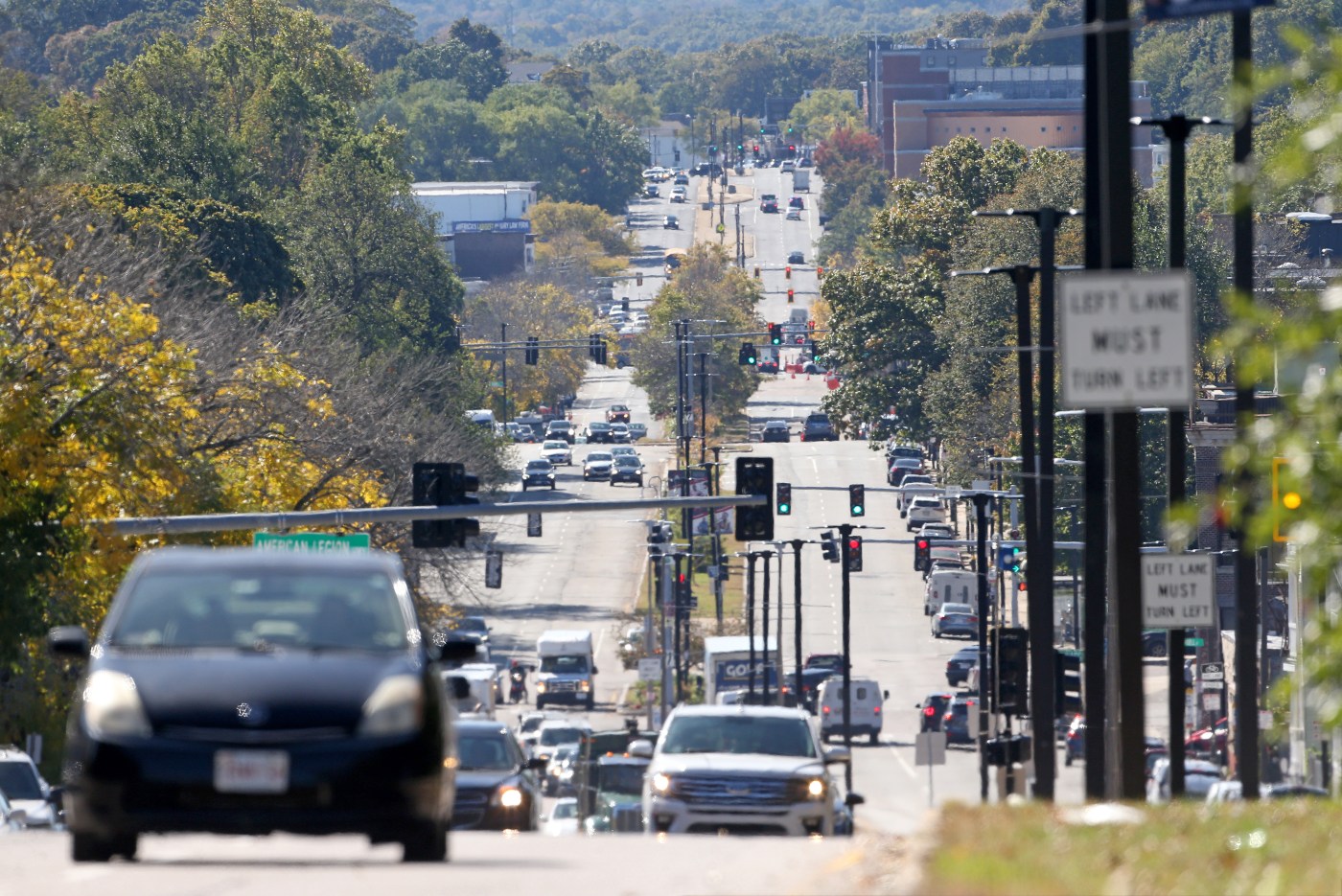
Boston launches $44M ‘transformational’ redesign of Blue Hill Avenue
The city will invest $44 million in redesigning Blue Hill Avenue corridor, Mayor Michelle Wu announced, aiming to correct decades of disinvestment and promote safety, efficiency and quality of life along one of Boston’s most travelled roadways.
“(We’re) marking a major milestone in the city of Boston and across every level of government in our push to deliver the type of transportation connectivity and economic vitality that we believe every neighborhood deserves, but especially in one of the major economic drivers of the city’s major population centers, and frankly, an area of Boston that has received historic disinvestment for many decades,” said Mayor Michelle Wu at an embargoed press briefing Tuesday.
The project will include a $44 million investment, broken into $18 million from the city, $15 million from a federal grant and $11 million from the MBTA. The plan centers around a new multimodal design that will add a center bus lane to the street.
The bulk of the construction will begin in 2026, with a block-by-block redesign strategy that city officials say will incorporate input from local residents and businesses.
In the meantime the city will focus on short-term projects to quickly improve the condition of the roadway. These include refreshing of crosswalks and pavement markings, improvements the street lighting, roadway repaving north of Warren Street, and sidewalk and pothole repairs, Rep. Ayanna Pressley listed at the briefing.
The avenue is one of the most congested and most used by bus riders, city officials said. Every weekday, 37,000 bus riders travel Blue Hill Ave., more than any Green Line branch and two times the capacity of TD Garden, officials said.
This works out to 3,056 hours lost for bus riders on the routes every weekday, the city said. On average, according to an oft-cited Livable Streets report, Black riders spend 64 more hours on the bus than white riders.
Safety along the roadway is a major issue, speakers emphasized. EMS responds to a crash along the corridor on average every three days, city officials said, and the avenue is in the top 3% of Boston streets for number of vehicle crashes per half mile.
Related Articles
Boston declares snow emergency; Healey tells non-essential state employees to stay home
Boston parents can still get ‘January incentive’ for logging into kid’s city savings account
“What we’ve heard time and time again is that the status quo at Blue Hill Avenue is unacceptable and it must change,” said Pressley. “It does not match the aspirations of our community today. As the mayor articulated, it is unsafe to travel. It does not add aesthetic value to the communities that it cuts through. And it isn’t efficient for any mode of transportation.”
The city collected over 2,000 public comments on plans for Blue Hill Avenue over a two year period, according to documents posted on the city site. Contributions from the public will continue to be a priority throughout the block-by-block redesign process, speakers said, including reaching out to community members who may often be reached by the public processes.
“So often these changes happen and Black and Brown communities are not the ones who get to reap the benefits,” said City Council President Ruthzee Louijeune. “And so it is our every intention to make that happen.”


